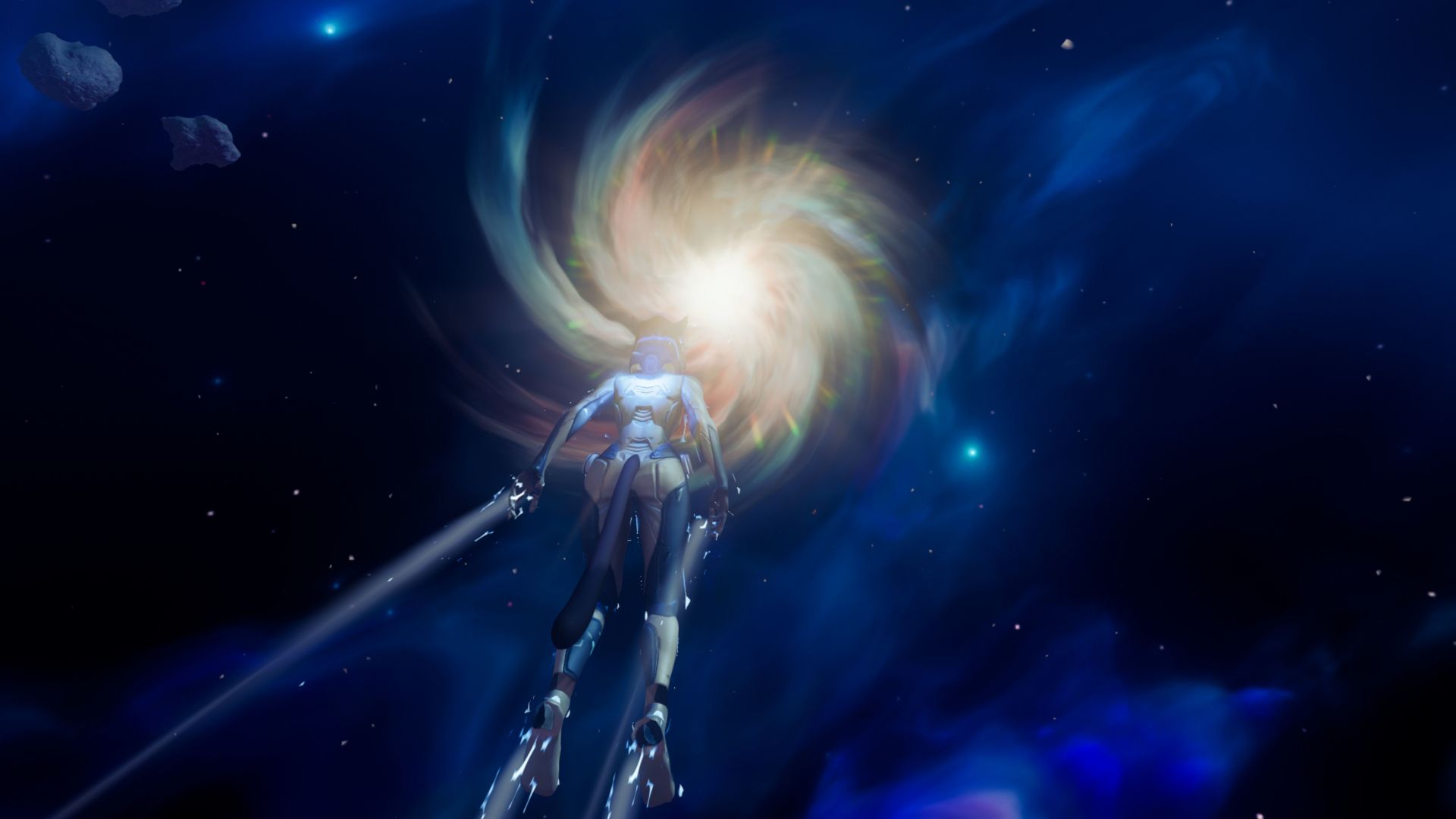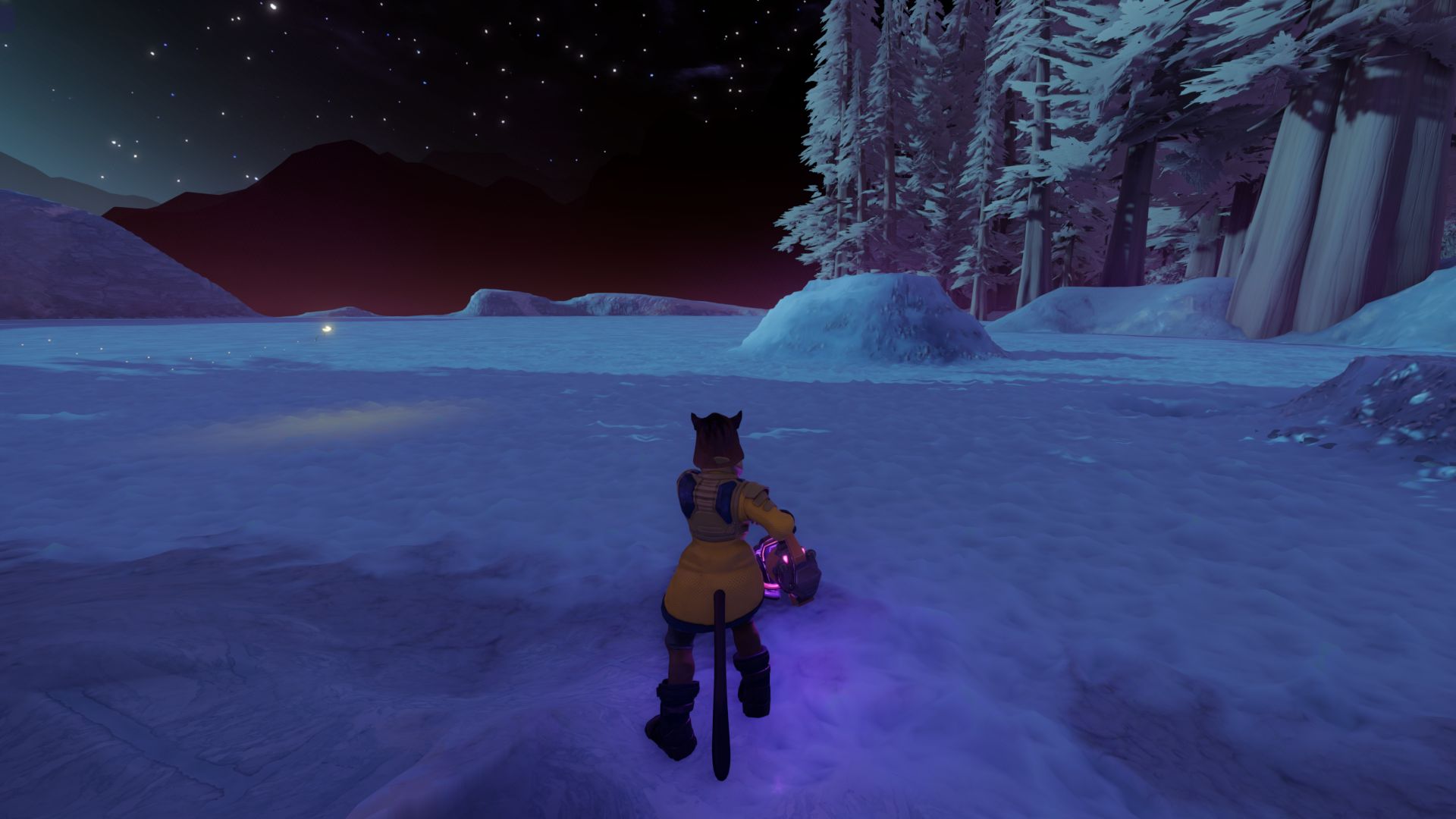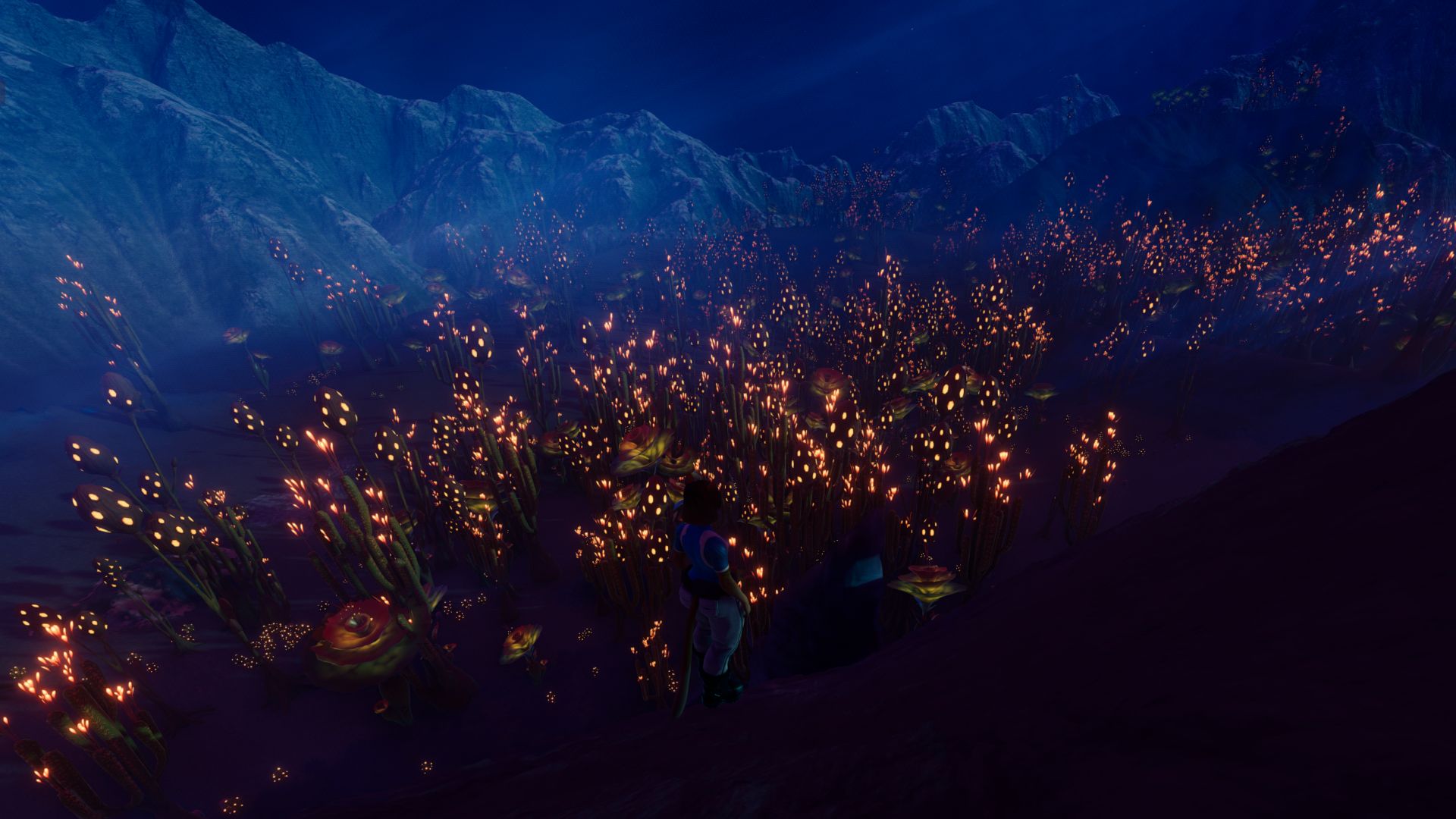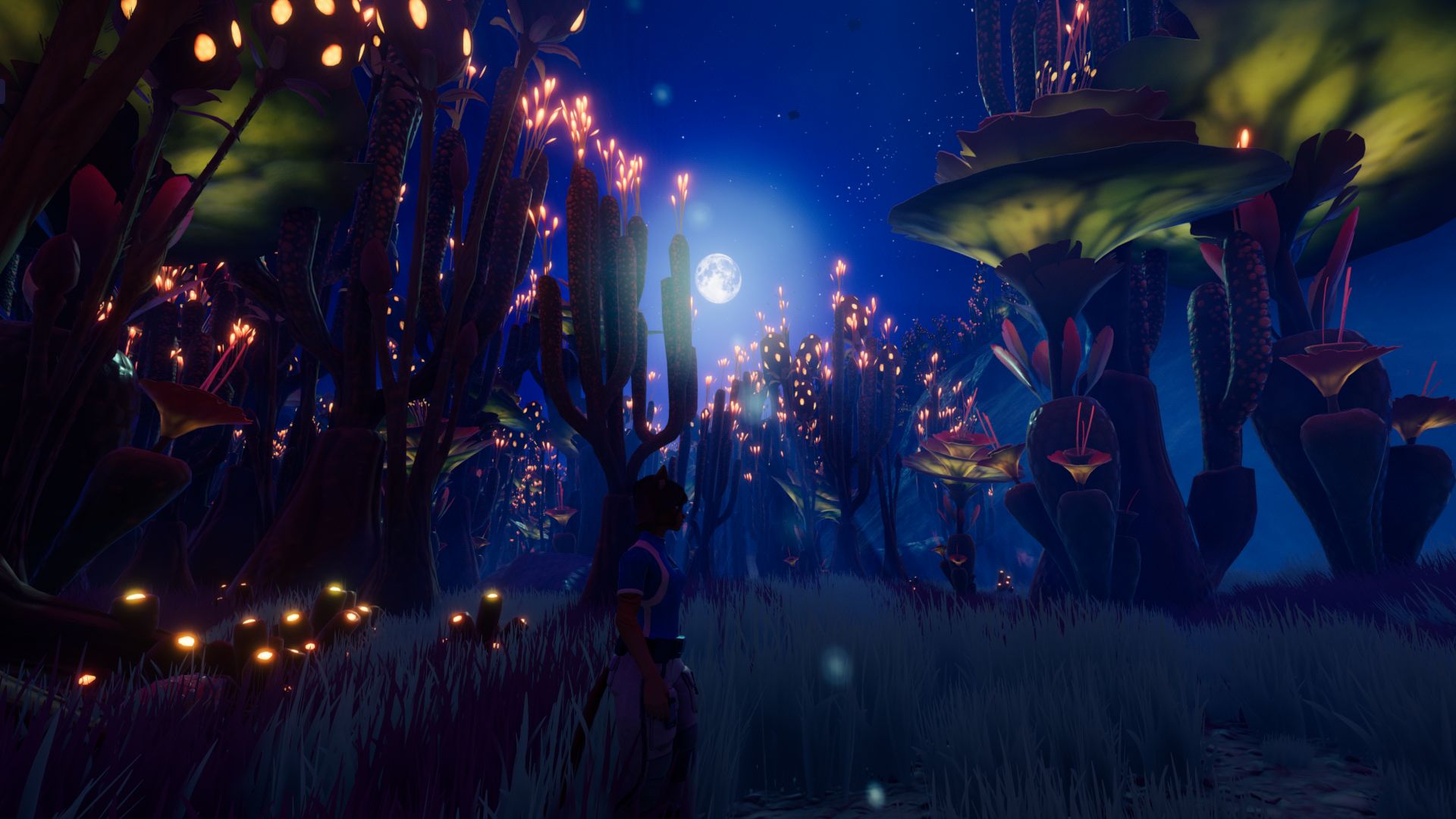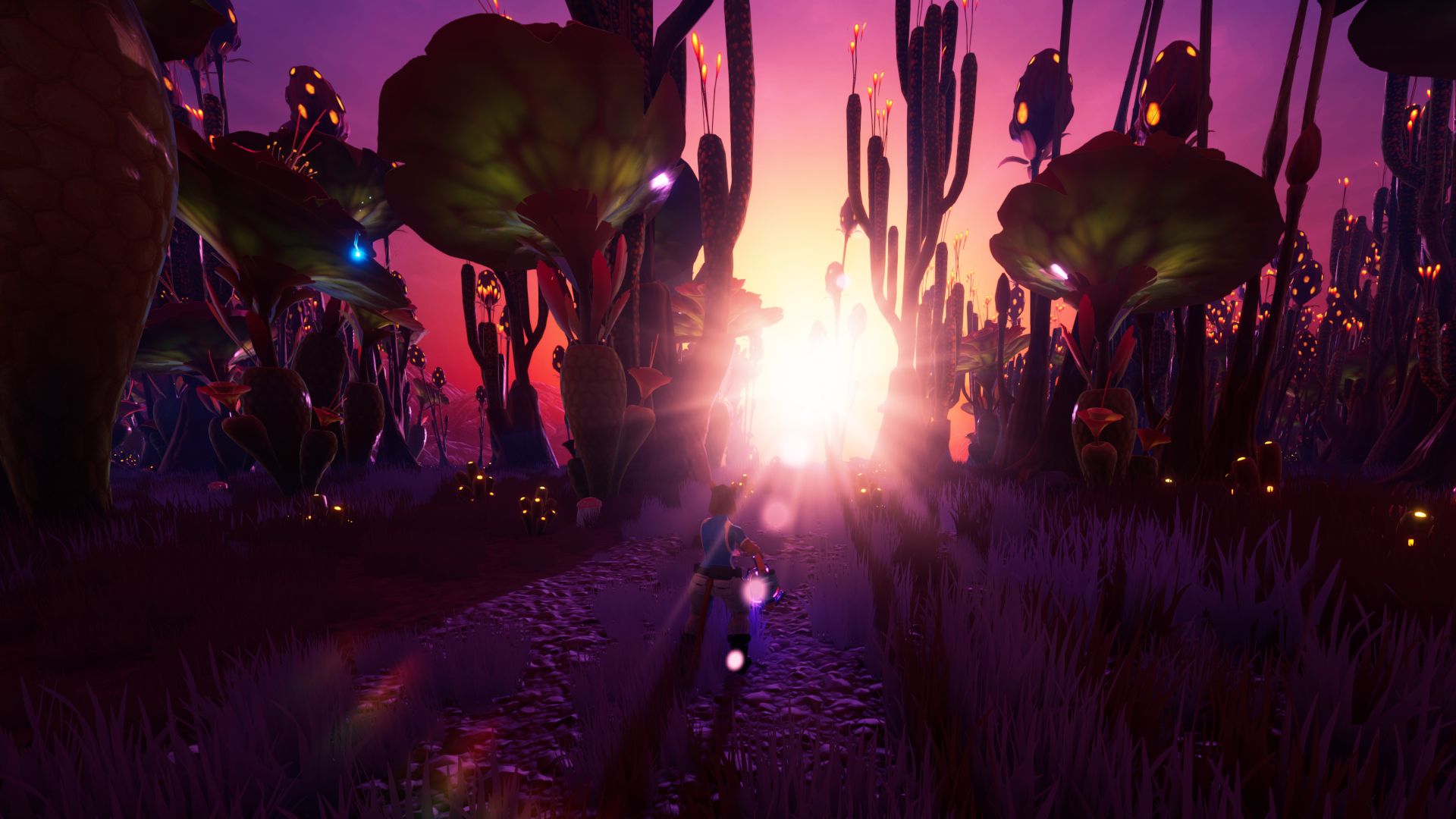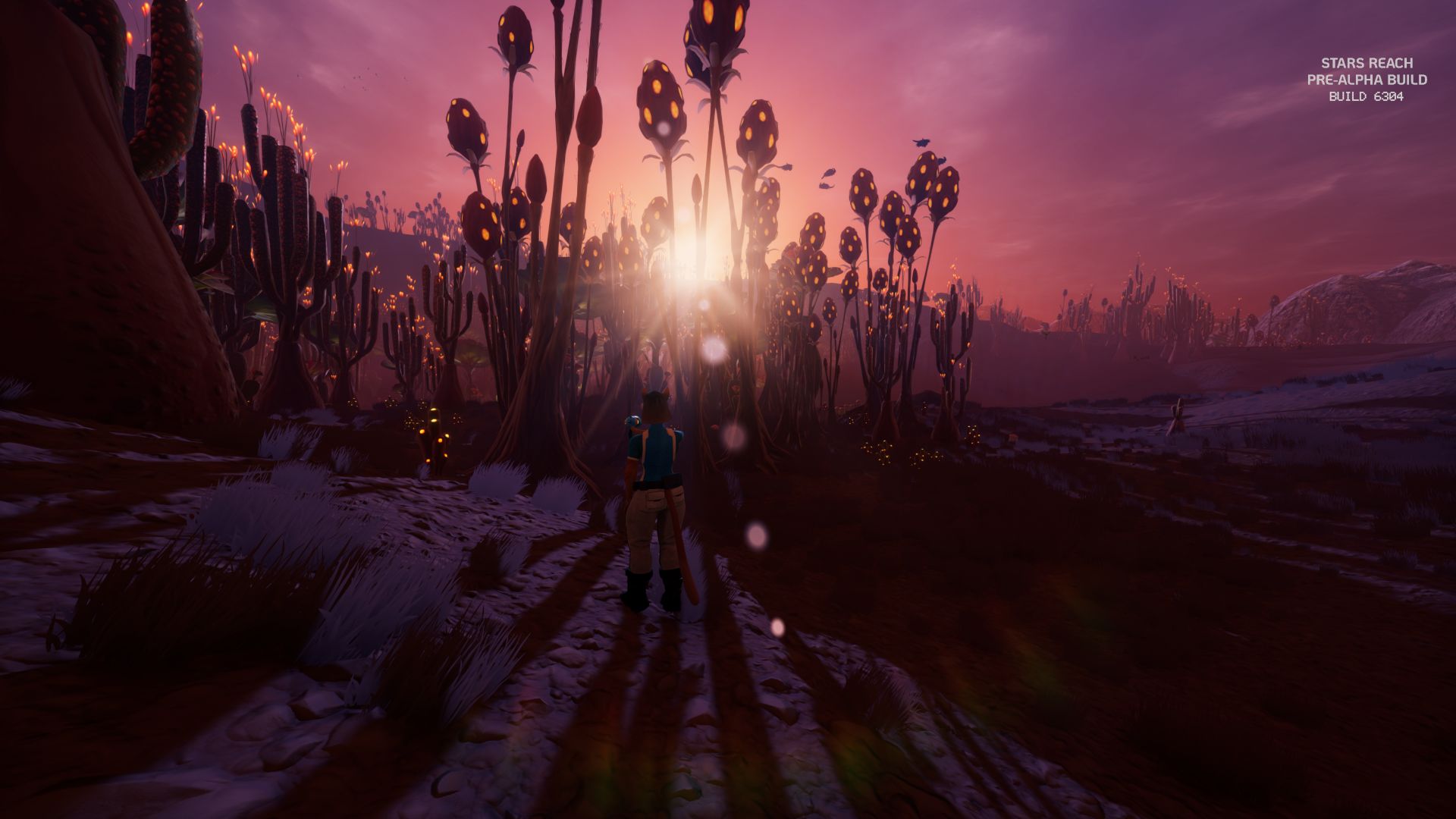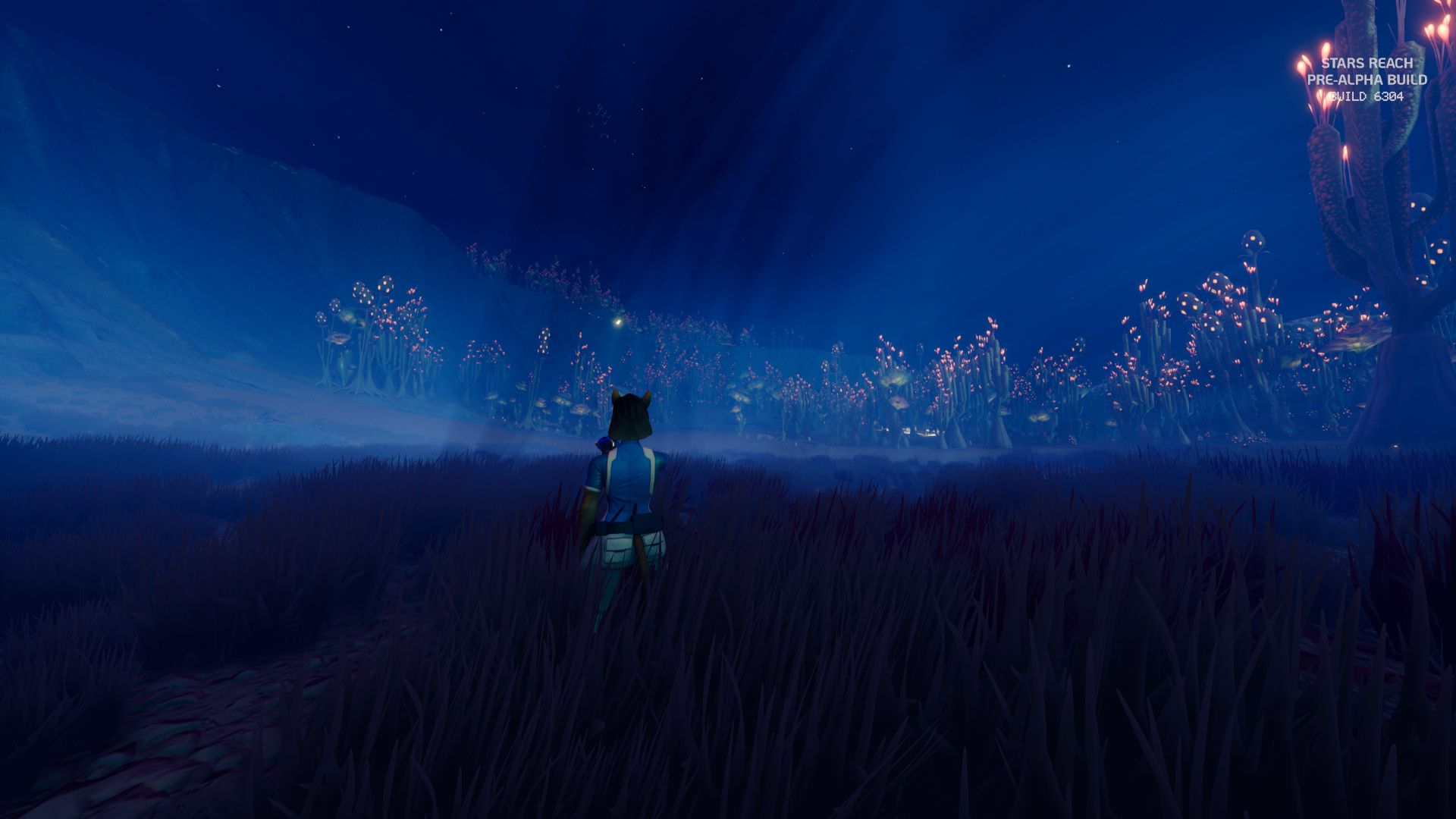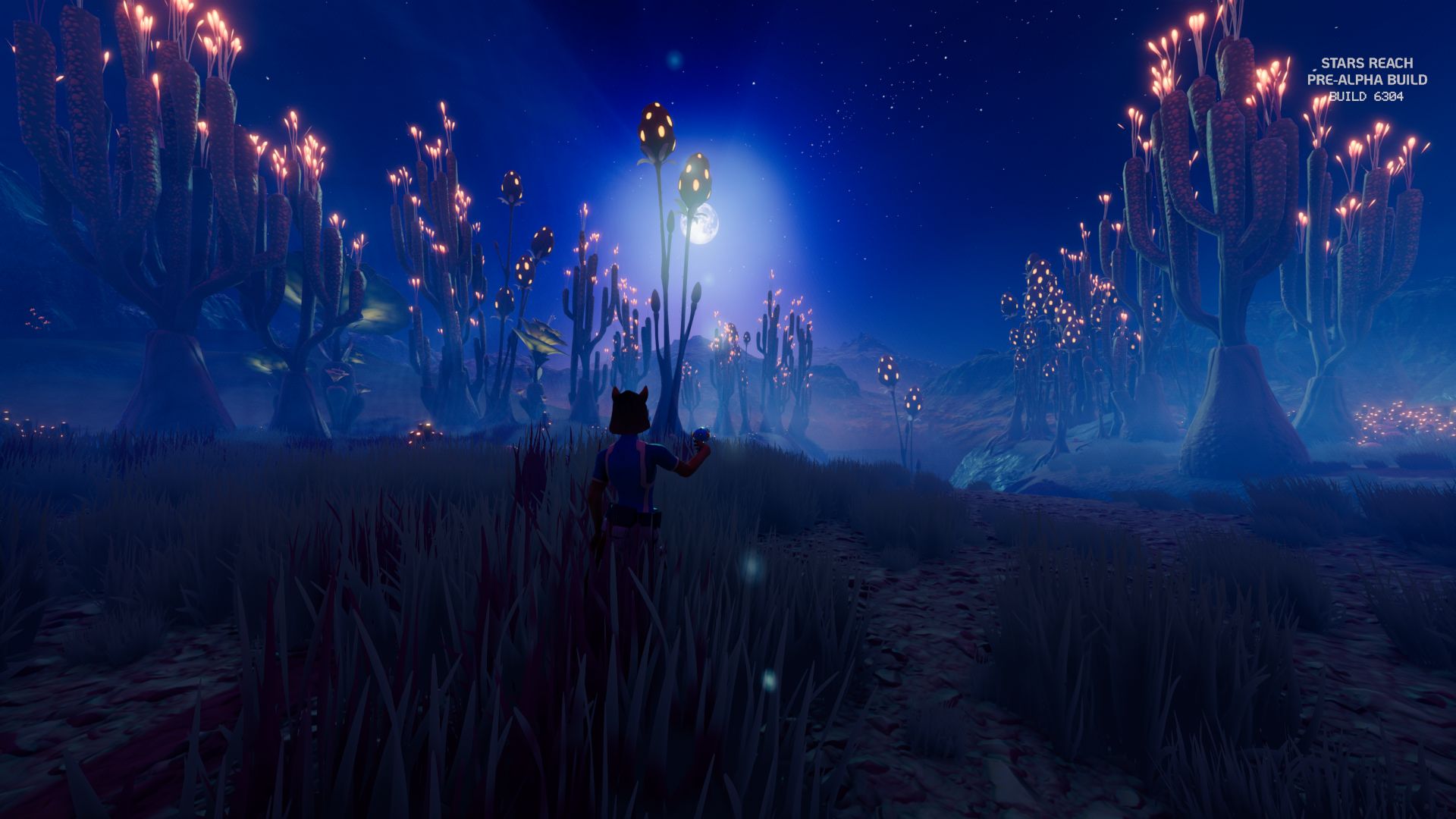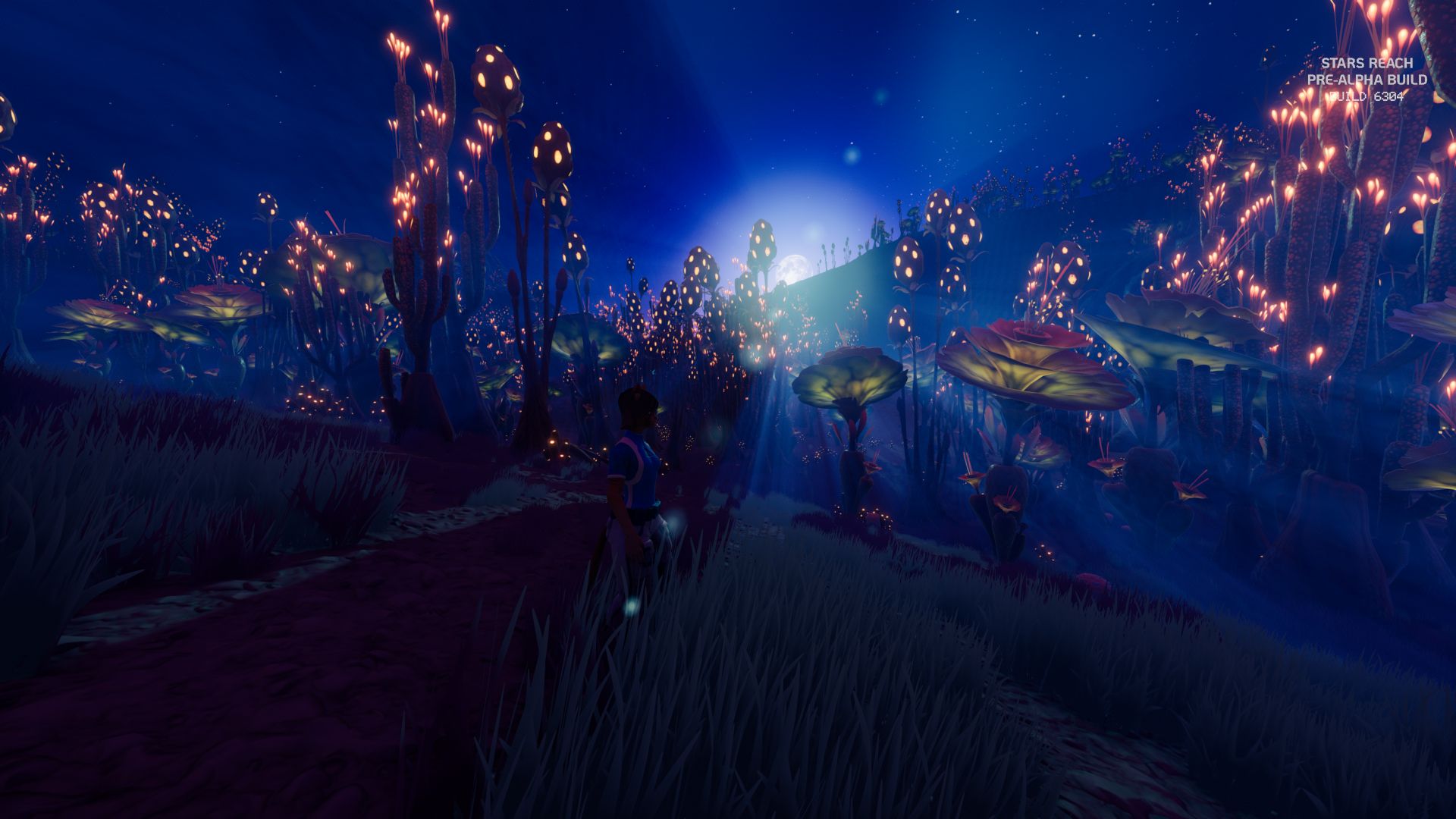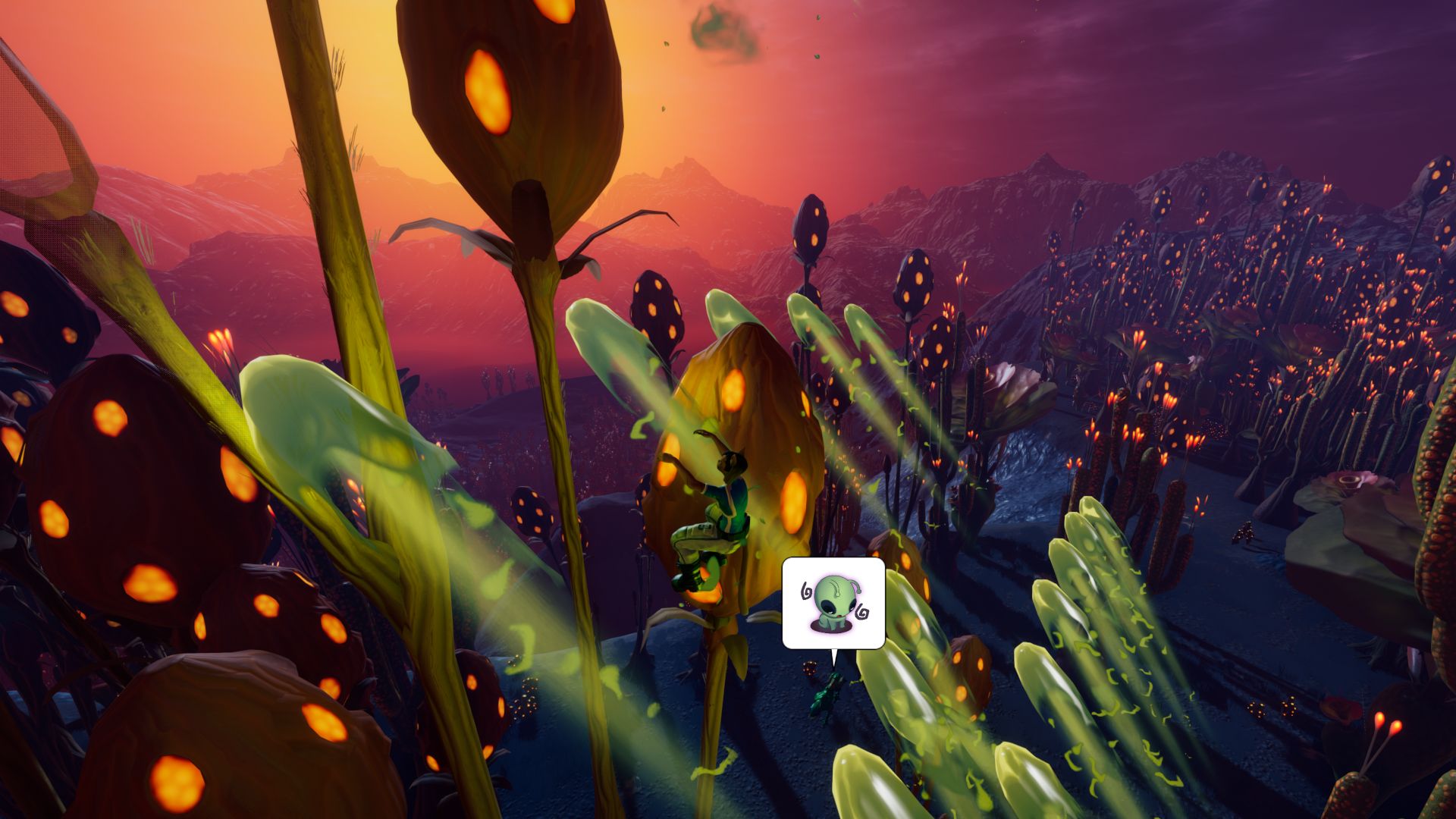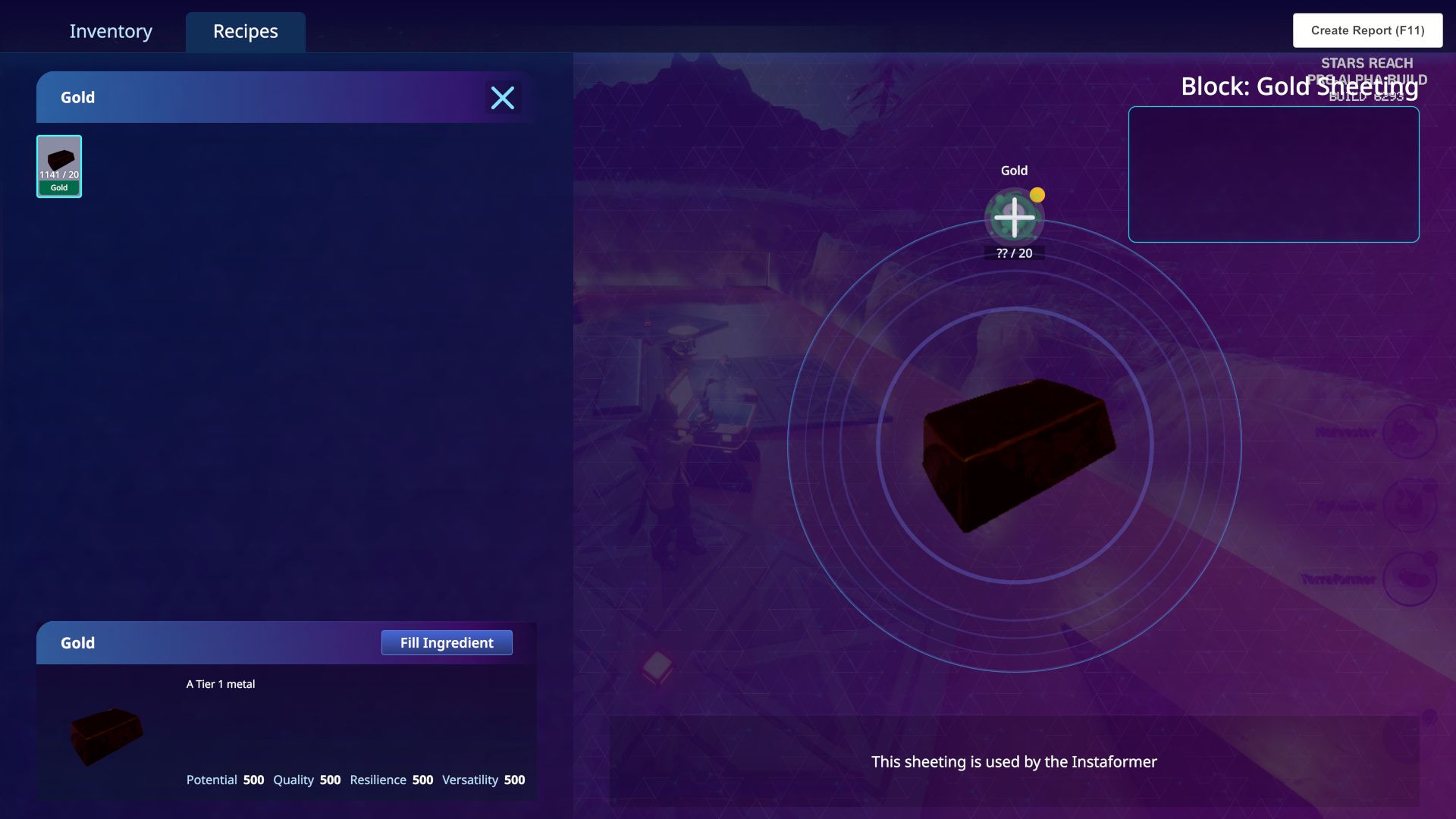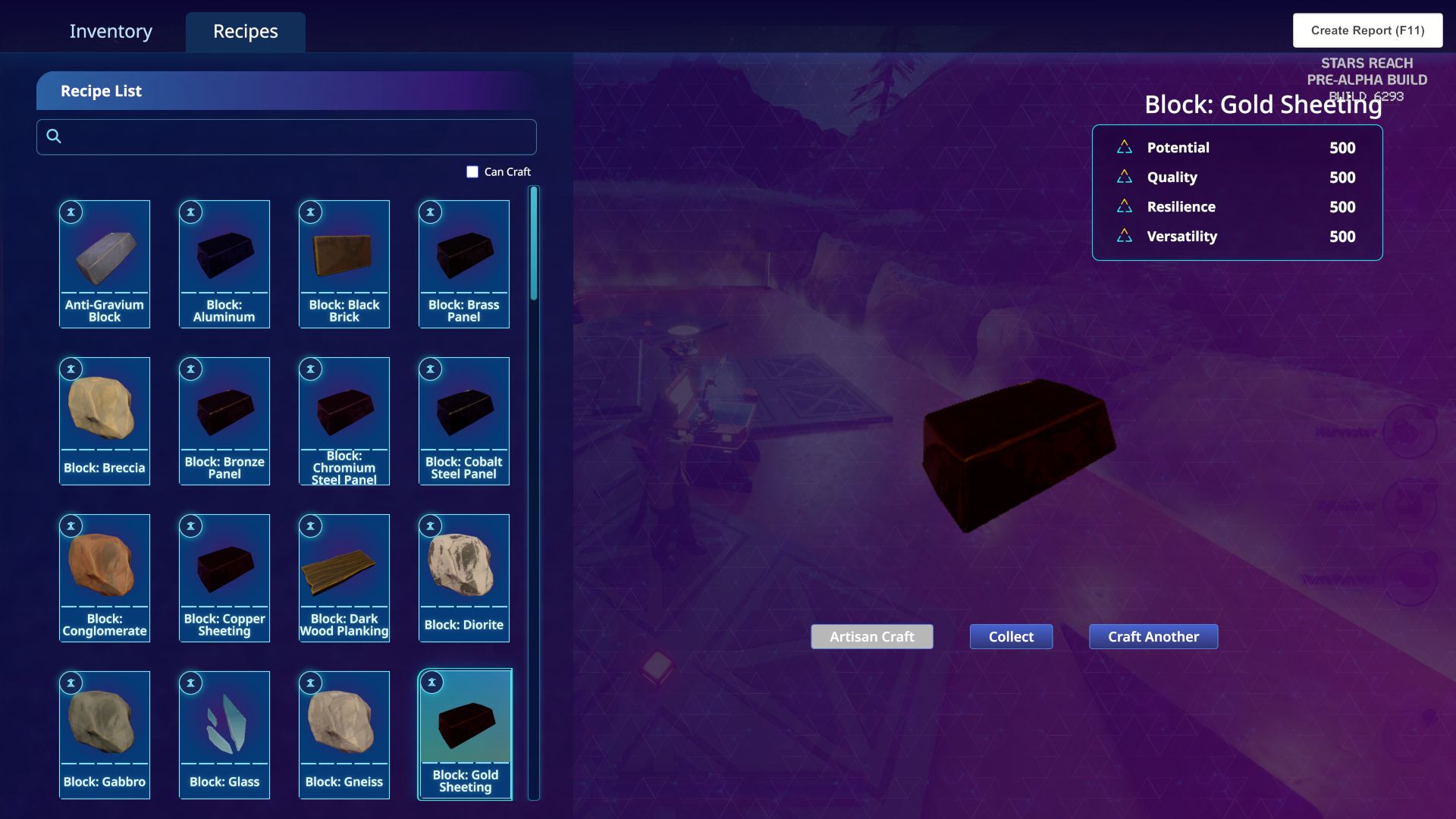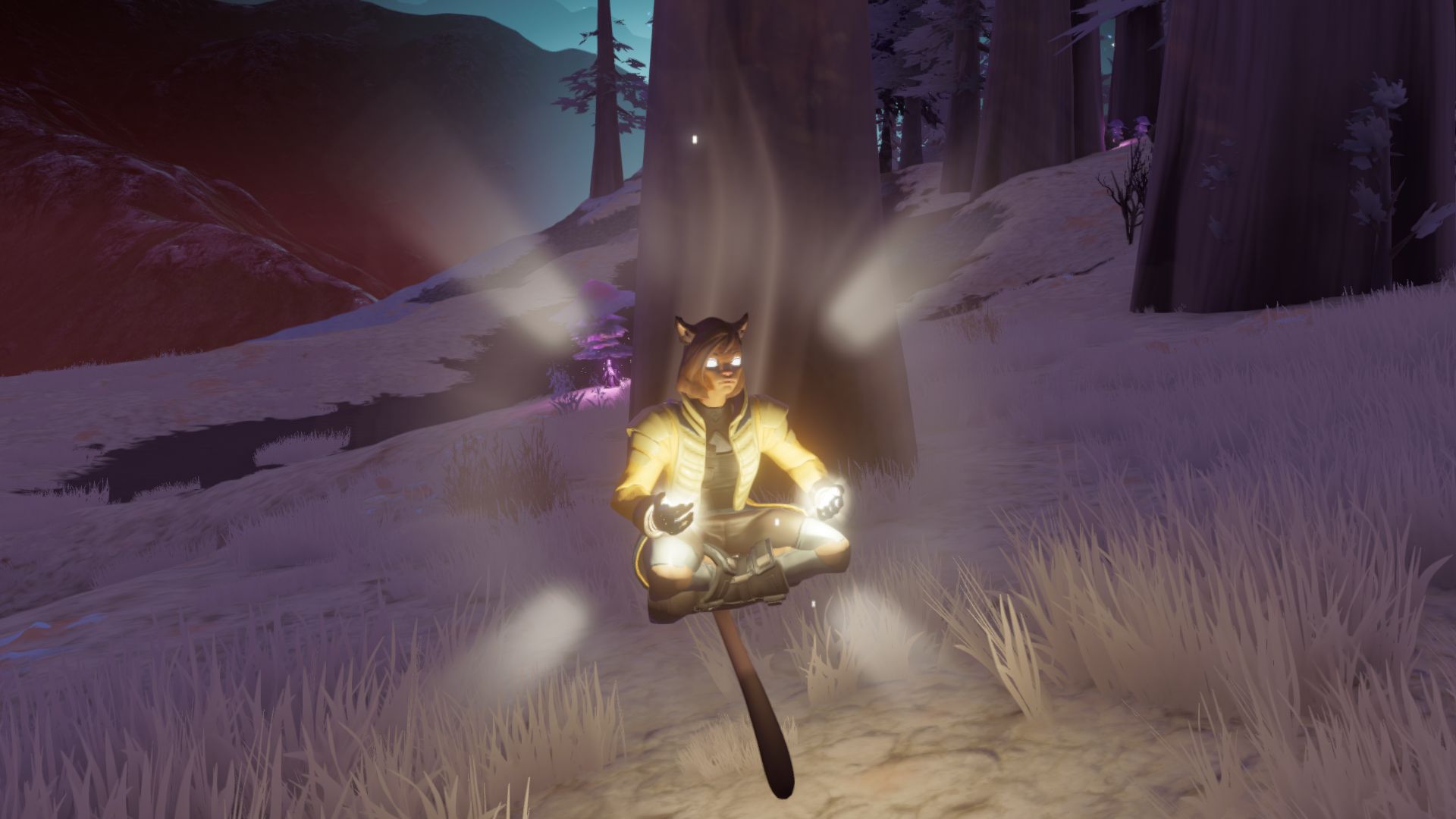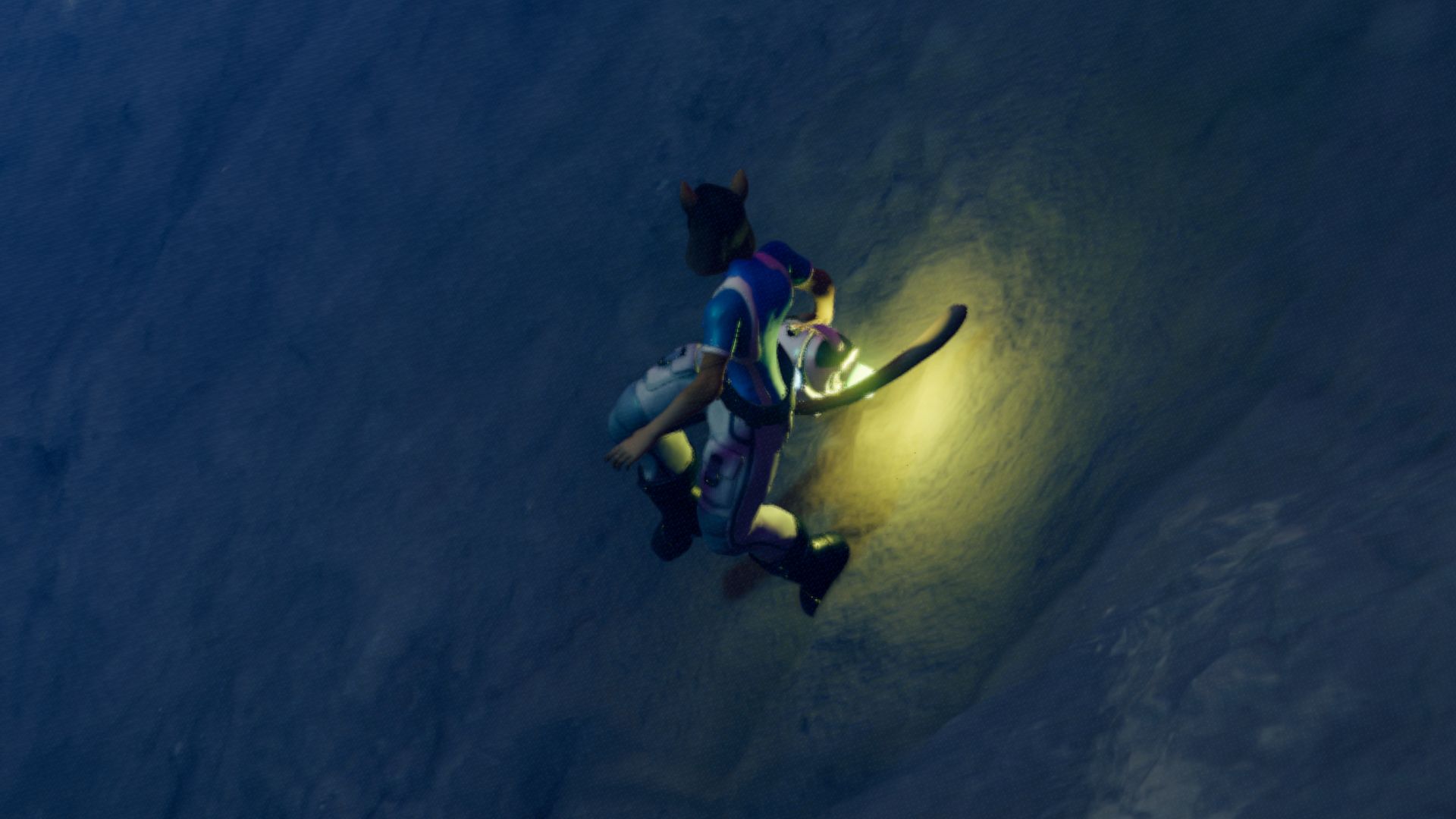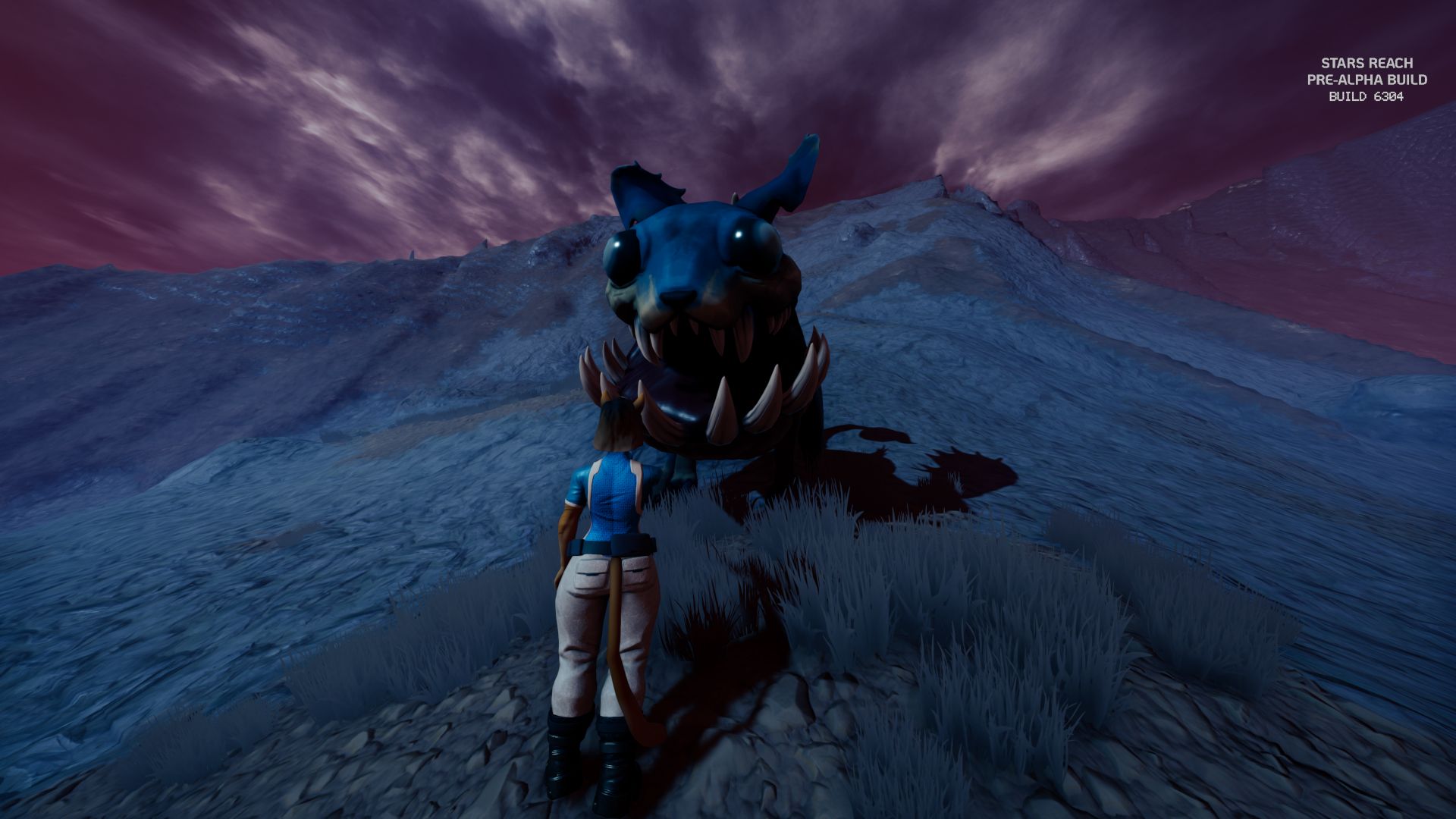PAT17 Wild Wormholes
On Thursday June 12, we got our first taste of the latest pre-alpha update to the Stars Reach playtest. Just three hours, but this was followed by another five hours on Saturday. And in this specific case, it is of importance to have participated in at least two test sessions, as the main feature of this update is one freshly generated planet each session. But there’s some other stuff to talk about as well.
Wild Wormholes
Wormholes are used as the in-lore explanation for intergalactic travel. It’s a common trope in Sci-Fi although probably not exactly realistic - but the basic conceit is, that a wormhole allows you to travel arbitrary, interstellar distances almost instantly. Jump in through one black hole - come out another. If not that, then it’s typically warp drives, hyperjumps, beaming, teleport… all the same concept basically. It’s all about getting places fast.
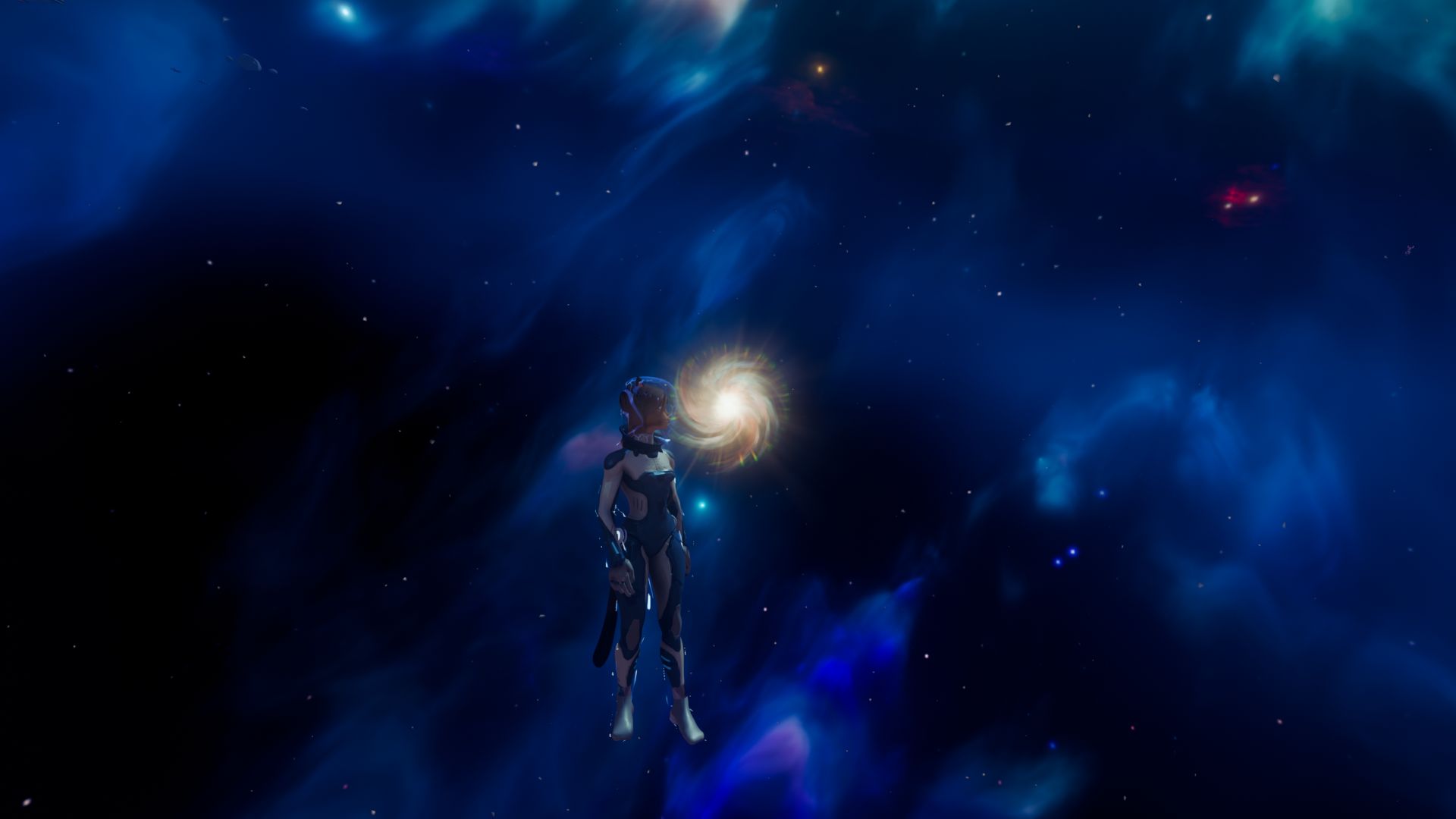 Lucy in the sky, with wormholes
Lucy in the sky, with wormholes
In the case of Stars Reach, the wormholes are artificial creations - made by the Old Ones to connect the various star systems that make up their “Garden” - i.e. the planets they sculpted and seeded with their genetic creations of life. The Old Ones are long gone, and their disappearance is a big mystery - but their robotic servants, the “Servitors” are still around, tending to the Gardens and the wormholes as well. And they might open up new wormholes and close down existing ones.
That’s the lore explanation for why the game does generate new planets for players to visit - and remove old planets, once they’ve become unused and are no longer being visited by players. That allows the game to offer an ever fresh supply of new planets for players to explore and exploit. And that’s an important part of the gameplay - as unlike in SWG, resources like ores and minerals do not respawn. In order to find more of a metal, or find a version of it that has nice random stats/attributes - you absolutely need to discover a new planet that has what you want. And some planets are going to end up be just being mined for their goods and then discarded. While others are gonna be settled, governed and groomed by players (and those ones will never become inactive and thus can stay around indefinitely).
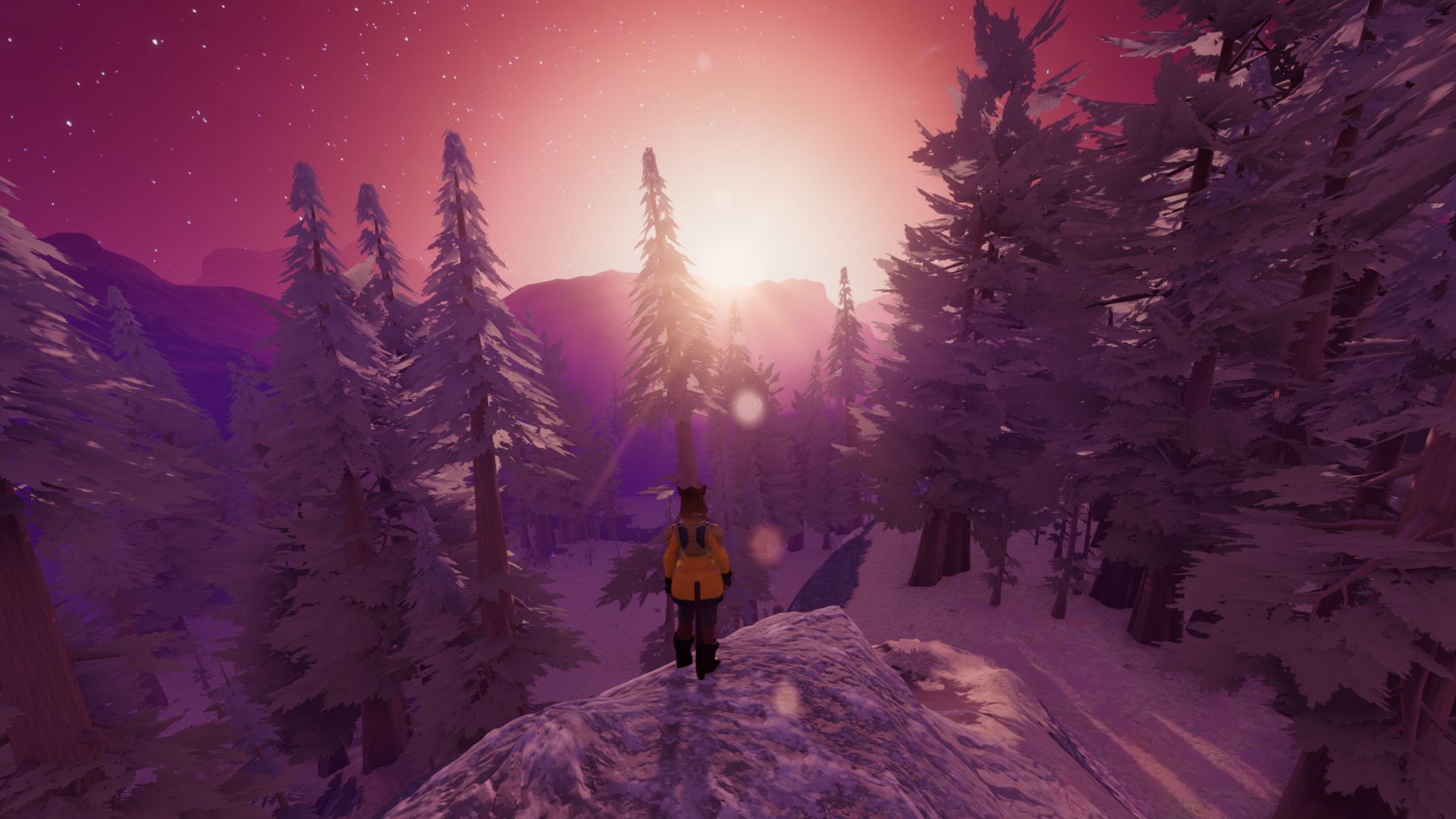 Planet Harclivus was only available on Thursday
Planet Harclivus was only available on Thursday
And now we see the introduction of Wild Wormholes. And those are not opened by the Servitors, at least not intentionally. Since they still seem to lead to Garden-Planets though, they probably are caused by some sort of malfunction of whatever technology they use to control the wormholes in the first place. As you can probably tell, I’m not hundred percent up to date on all of the lore, and haven’t really dug deep into this either. My interest actually lies more with the gameplay implications this has. That’s the reason this exists and was added to the game in the first place - and the lore then just adds a bunch of handwavium after the fact.
I’m very happy with slowly discovering more and more of the lore while playing - but less inclined to catalogue all the information found in all of the lore dumps. I’ll leave the mantle of lore keeper for others to take up - talented people more suited to the task than me. But when it comes to gameplay implications - now that’s my jam.
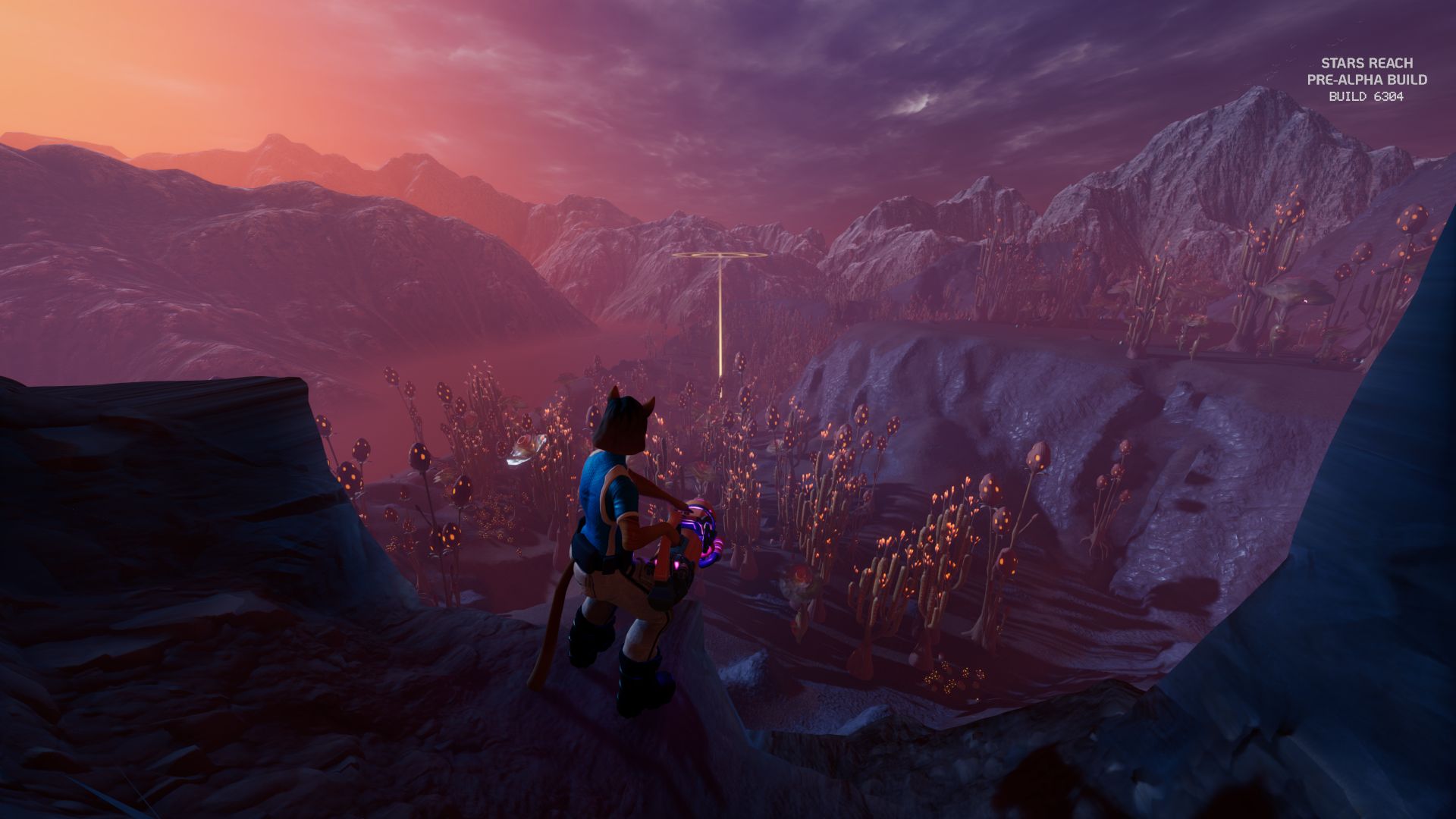 Planet Harripa was only available on Saturday
Planet Harripa was only available on Saturday
What the Wild Wormholes do for the test, is to allow for a testbed that basically gets reset every session. Things can be tried out there, and even if something goes wrong, that will not cause any future headaches, as it will simply be gone come next test session. At the same time, the testers can continue building their houses, cities and other building contraptions on all the other planets (and in space), unimpedetly. It’s a clever way of enabling both having spaces for rapid iteration - as well as having spaces that provide the longer-term persistency that testers crave for their building projects.
What the Wild Wormholes mean for the later game, is to provide a set of planets that are earmarked as “single-served & disposable” right from the start. Just available for a limited time, as players do not know, how long the wormhole will stay open, before collapsing again (or getting cleaned up by the Servitors). These short-lived planets allow for a regular, constant rotation of new places to discover, new ores to mine, and maybe even new ruins/artefacts/mysteries to be uncovered. Nobody’s gonna complain about swiss-cheesed-up terrain there. Lore-wise they also allow for some things to happen, that are not sanctioned by the Servitors, and basically outside their immediate sphere of influence. That’s probably where you’ll find and make the stuff that you then have to smuggle past the servitors to get it back in to the regular game universe.
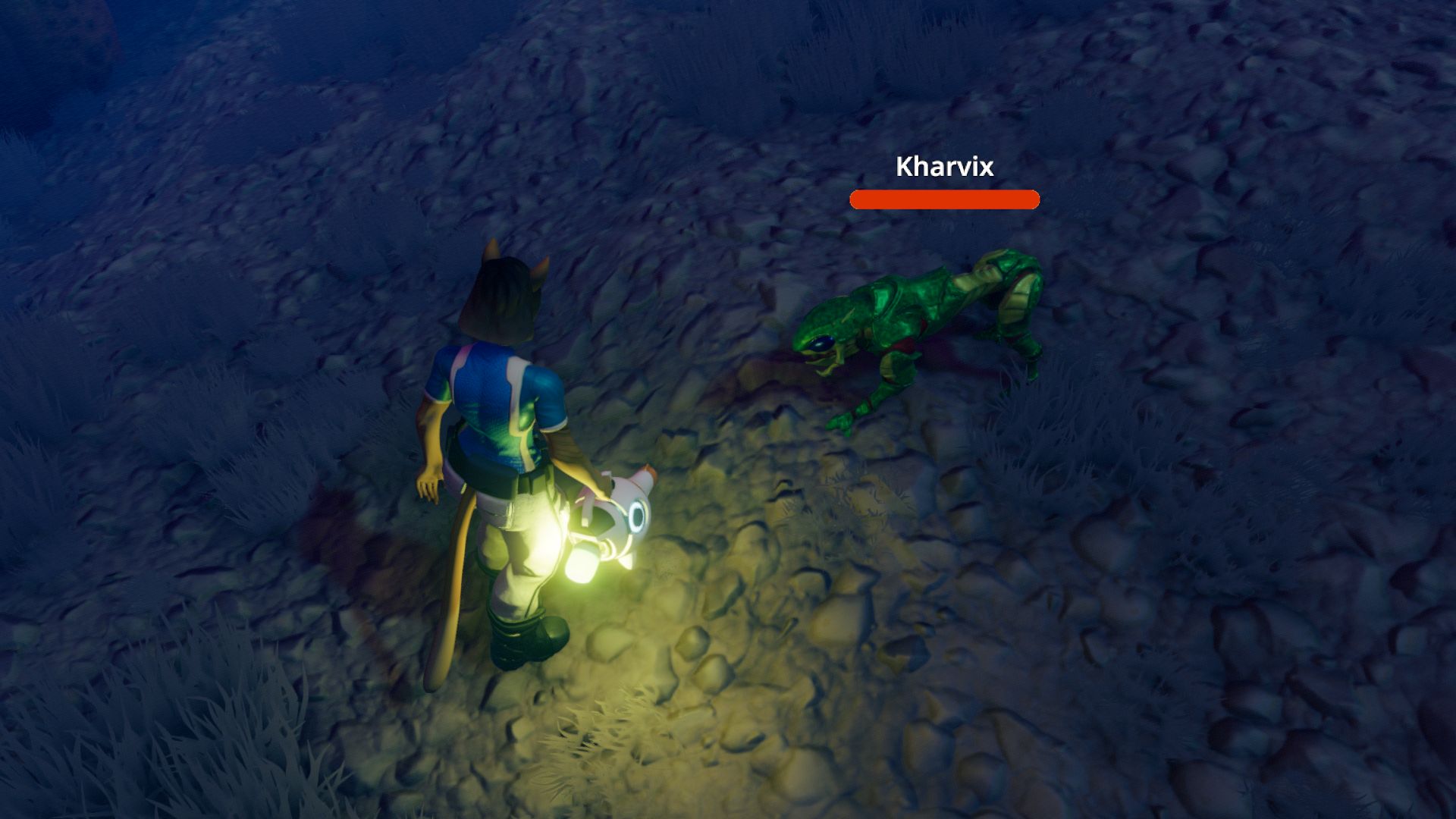 My first sighting of the new creature type
My first sighting of the new creature type
And last but not least - the one-click procedurally generated planets accessible through the Wild Wormholes also are a considerable step closer towards 24/7 servers. Being able to spin up and shut down more new planets like that - and doing so automatically based on demand - is a feature necessary to have (and have tested and working well) before opening up the Early Access floodgates.
Planet Harclivus
Or “Planet Thursday”, as it’s called in my head, was the first planet available to players via a Wild Wormhole. And as far as planets go, it was not very impressive actually. (Other than being procedurally generated with less manual dev-cleanup work than ever before.) Seemed to have a lot in common with Pyromycis - being both rather cold in climate, as well as forested with alpine trees. There was a nice double-lake, connected by a little waterfall - but since temperatures were beyond freezing for most of the time, the water didn’t actually flow much during the three hours that this test lasted.
What was new to me, was the first appearance of a fertile soil (with grass and flowers on it) other than Peat. For now, on most planets so far, it seemed to be Peat that supported most of the plant life, and that had the low-growing, non-harvestable, decorative vegetation on it. Except for the Desert, which has lots of harvestable plants grow on the sand. But the plan is, that different planets or different biomes, come with their own preferred soil type. And gravel dumped out of the terraformer’s hopper is supposed to eventually erode into whatever is the preferred soil of the region. I think this was the first planet to actually sport it’s own preferred soil, different from Peat.
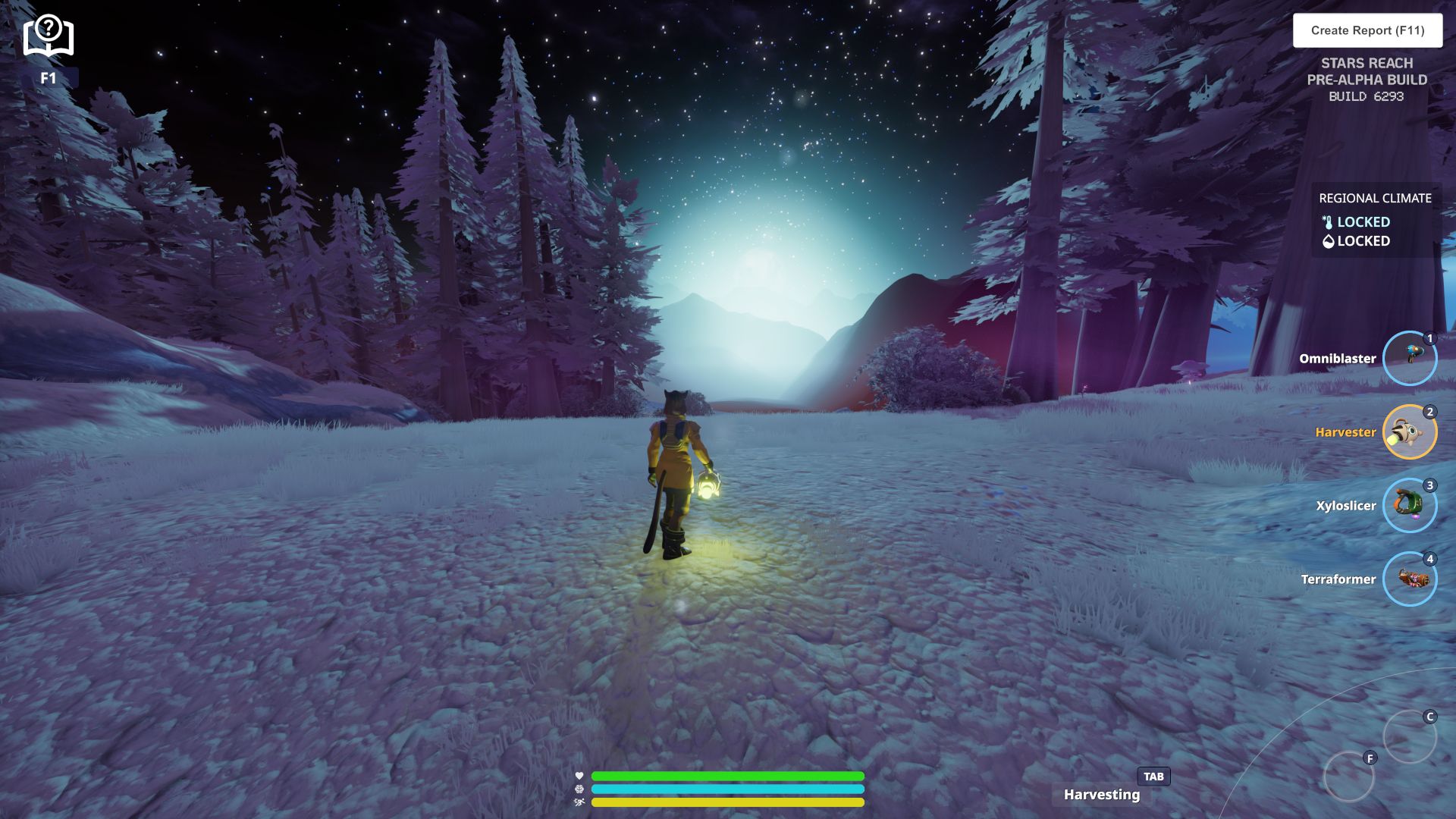 Standing on not-Peat (sadly I forgot what soil it was)
Standing on not-Peat (sadly I forgot what soil it was)
Another thing I noticed during this patch, was an increased proclivity for wild-fires. I don’t think that was limited to just Harclivus - but since it got fixed by Saturday’s test, and I witnessed it mostly on Harclivus - it still feels like something specific to that planet to me, even when it isn’t. Burning trees now get a strangely rectangular texture of glowing embers on the ground around them, and that seems to help spread fires. And spread they did. Like crazy. With several creatures around that featured fire-based attacks, capable of setting things on fire - Harclivus seemed to never be without some trees bright ablaze somewhere. The fires did leave behind a ton of new seedlings though - meaning the planet stayed moderately forested throughout all this.
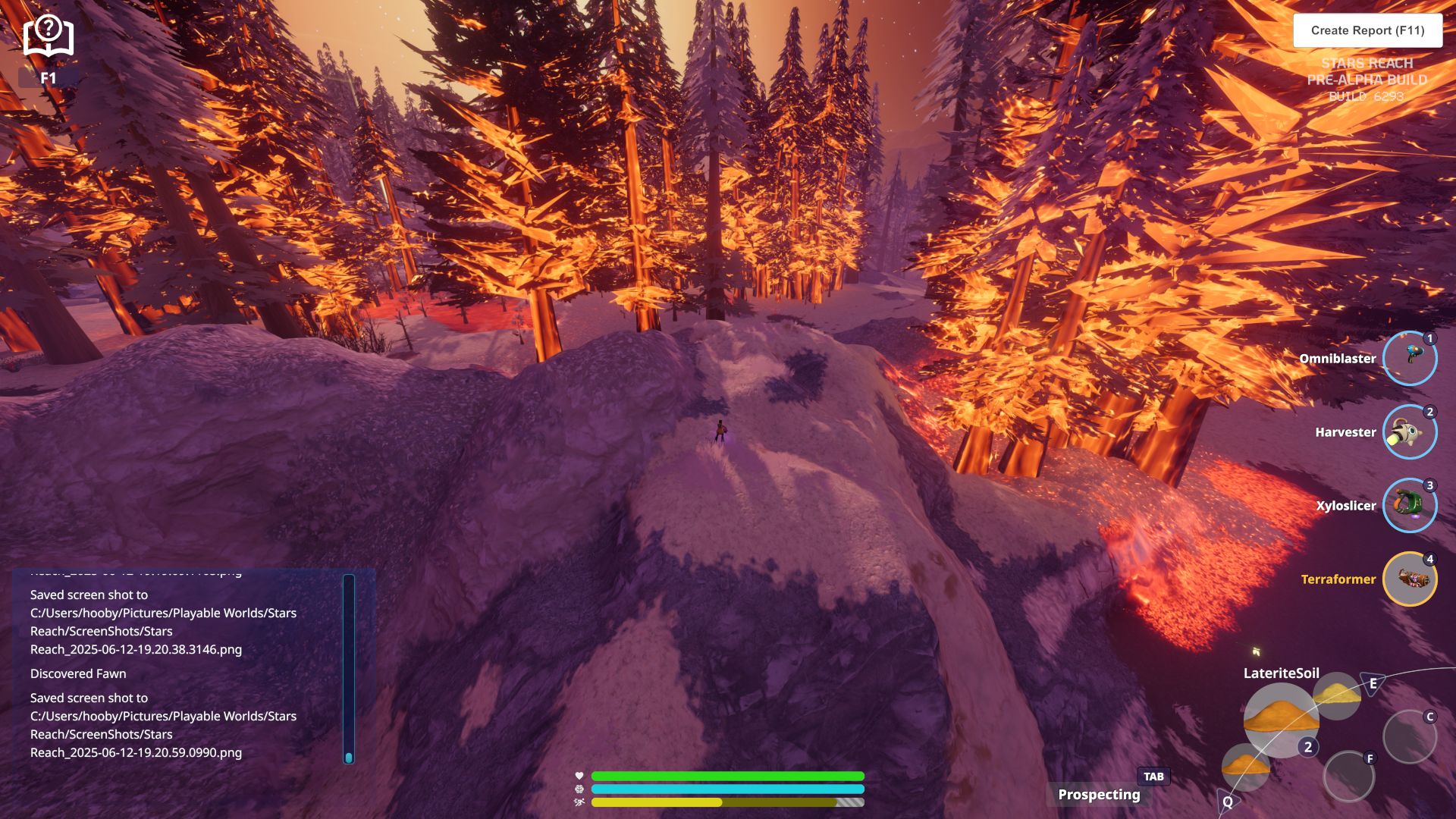 The world, the world, the world is on fire
The world, the world, the world is on fire
I also tried my hand at a little bit of manual firestarting - but found the spread to be not as crazy as I thought. Using the chronophasing melt beam takes some time to light a tree on fire, and it will only spread to other trees very close by. The larger fires seen to the planet might be down to the tree-density being higher on it’s original generation - but also to creatures with fire-attacks being able to set on fire a lot more trees in a very short time frame, while chasing after a running player.
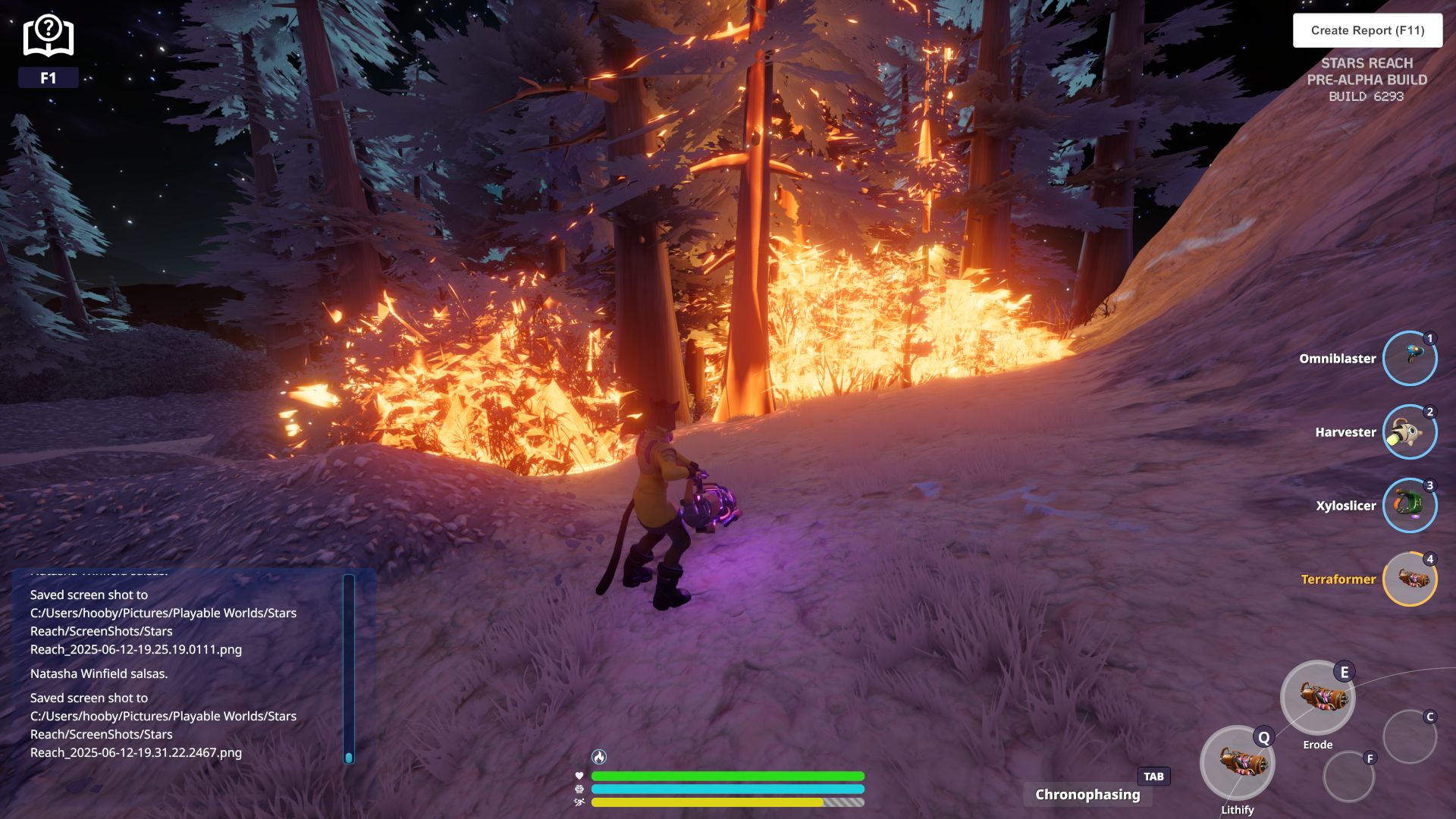 I’m a firestarter, twisted firestarter
I’m a firestarter, twisted firestarter
Planet Saturday
This one was officially called Harripa - and was another Wild planet that was only around for the duration of one single test session. It looked a lot more visually interesting than Thursday did, but in terms of diversity and biome range it was not hugely impressive either. But more importantly, it was quite different - not just visually (mostly because of the plants), but also in terms of available resources as well as creatures.
The more impressive part here is, that it’s another brand new planet, just two days after the last one. Up until now, we only got to see a new planet every few months - because of the manual dev work involved. The planets have been mostly procedurally generated before, but still required some manual cleanup and retouch, to get them ready for players. These new ones still have been looked at by the devs - but just to make sure nothing went catastrophically bad with generation. The goal is to eventually be able to automatically generate these planets with no dev input at all. And it seems we are indeed pretty close to that goal.
I’m definitely looking forward to seeing all the other planets the next few test sessions will bring - at least in screen-shot form, as I’ll not be able to actually participate in all the tests. A new planet every test. That’s something!
The Kharvix
The patch also introduced a new, insectoid creature species to the game. (Now available at a Maker near you!) Featuring their own brand of swarming tactics, these critters seem to be a welcome addition to the combat diversity - judging by the player feedback I’ve seen.
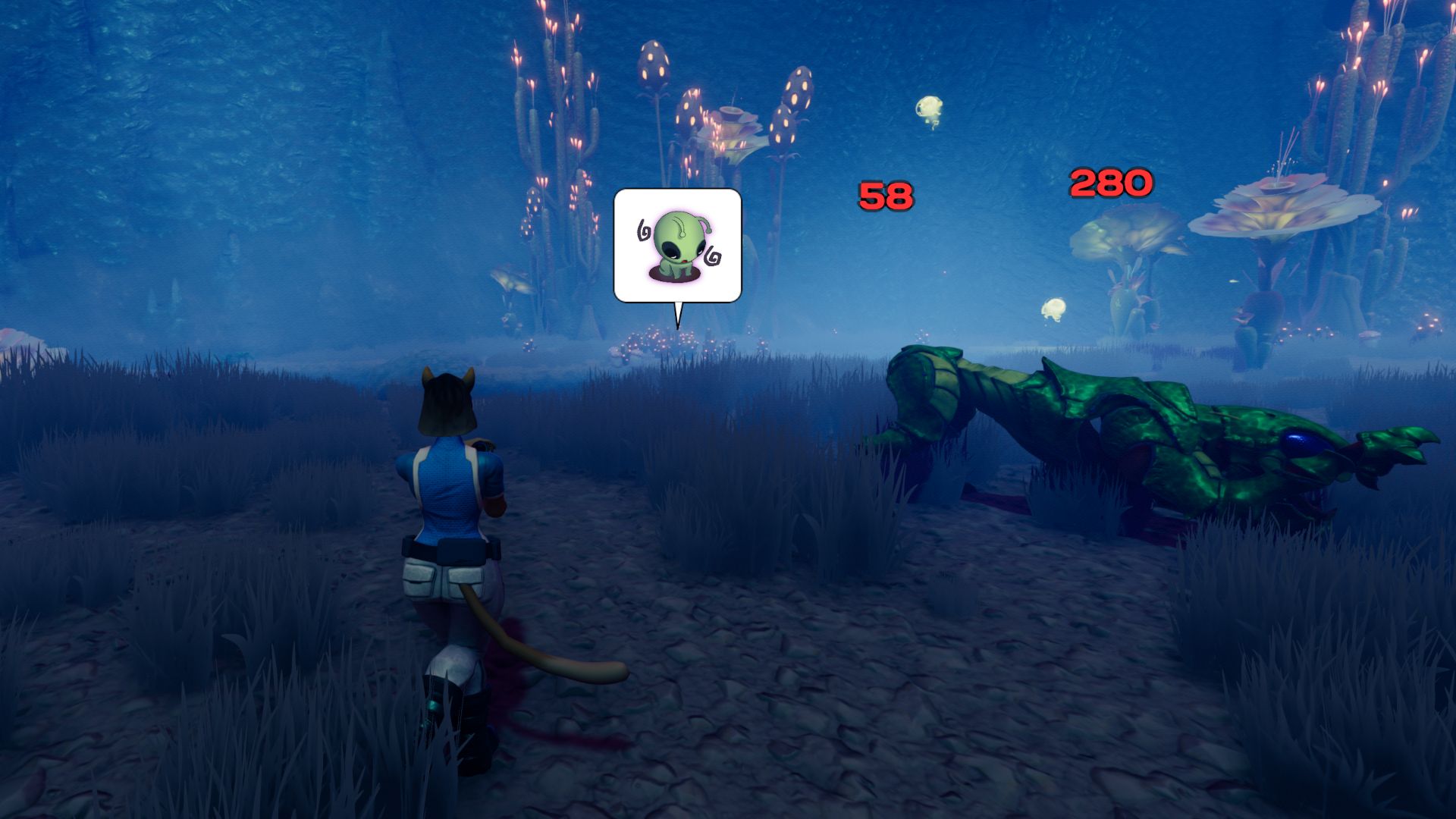
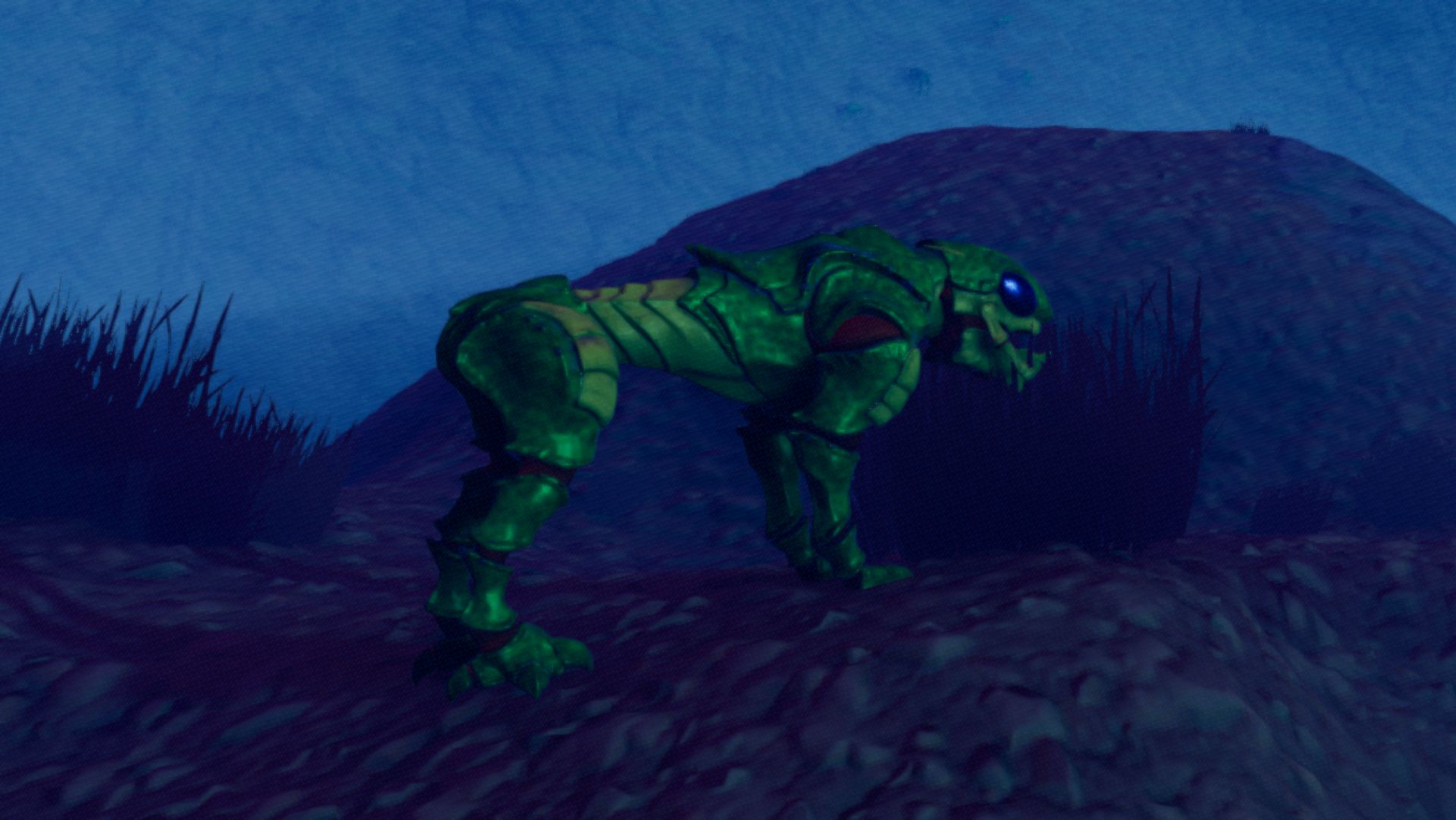
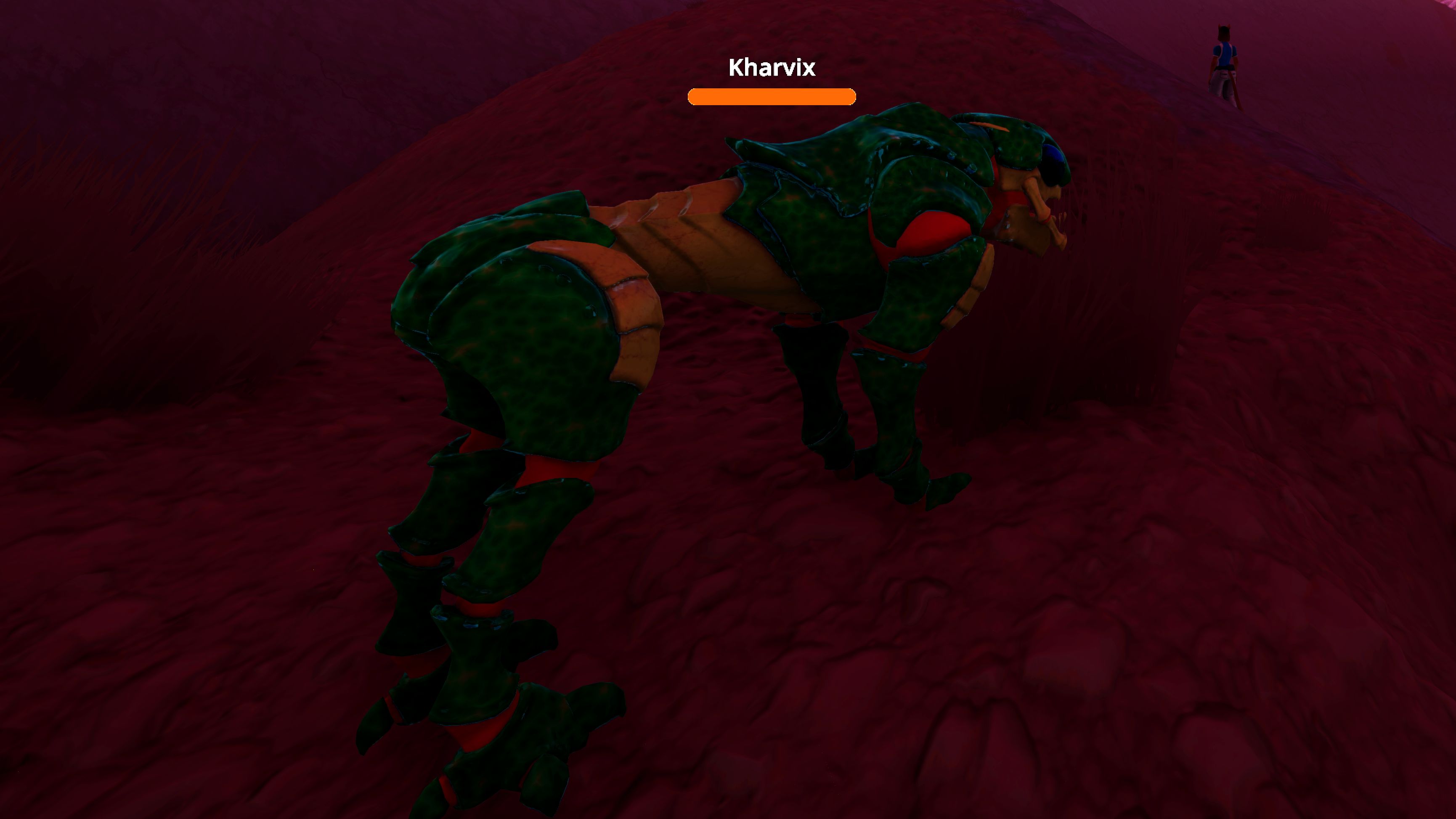 Brightening a dark night screenshot revealed a lot more color
Brightening a dark night screenshot revealed a lot more color
They definitely caused some chaos around the portal on Harripa, when they attacked there. The fact that the larger ones split into two smaller ones on death surely added to that. As did the fact, that this planet got very, very dark - when the sun was already down, but the moon not yet up.
Various other things
- Another big change that has been added this patch and had crafters all over the galaxy sigh in relief, is a “repeat” button on the crafting screen, that allows you to craft another copy of the same item, using the same materials - without having to input them again.
First signs of the UI Overhaul are becoming visible. This is another necessary step that brings us closer towards Early Access. There’s of course also been a lot of less visible stuff being done under the hood.
/afk is now a working command and also has a corresponding animation ingame.
- There’s now an animation for when you are sliding down hillsides because they are too steep - or too slippery.
- The Harror is more harrowingor. It’s still too easy to kite, and since it has no ranged attack, you can still solo it if you keep your distance.
The instaformer - when adding or deleting blocks - is no longer limited in size of how large a rectangle you can do at once at most.
And there has been the usual additions, like a few new refining recipes, some new plants, various bugfixes, a few more working instaformer blocks, exploding creatures & knockback, and first person view is not in the game yet - but work on it has started!
Meow? Meow!
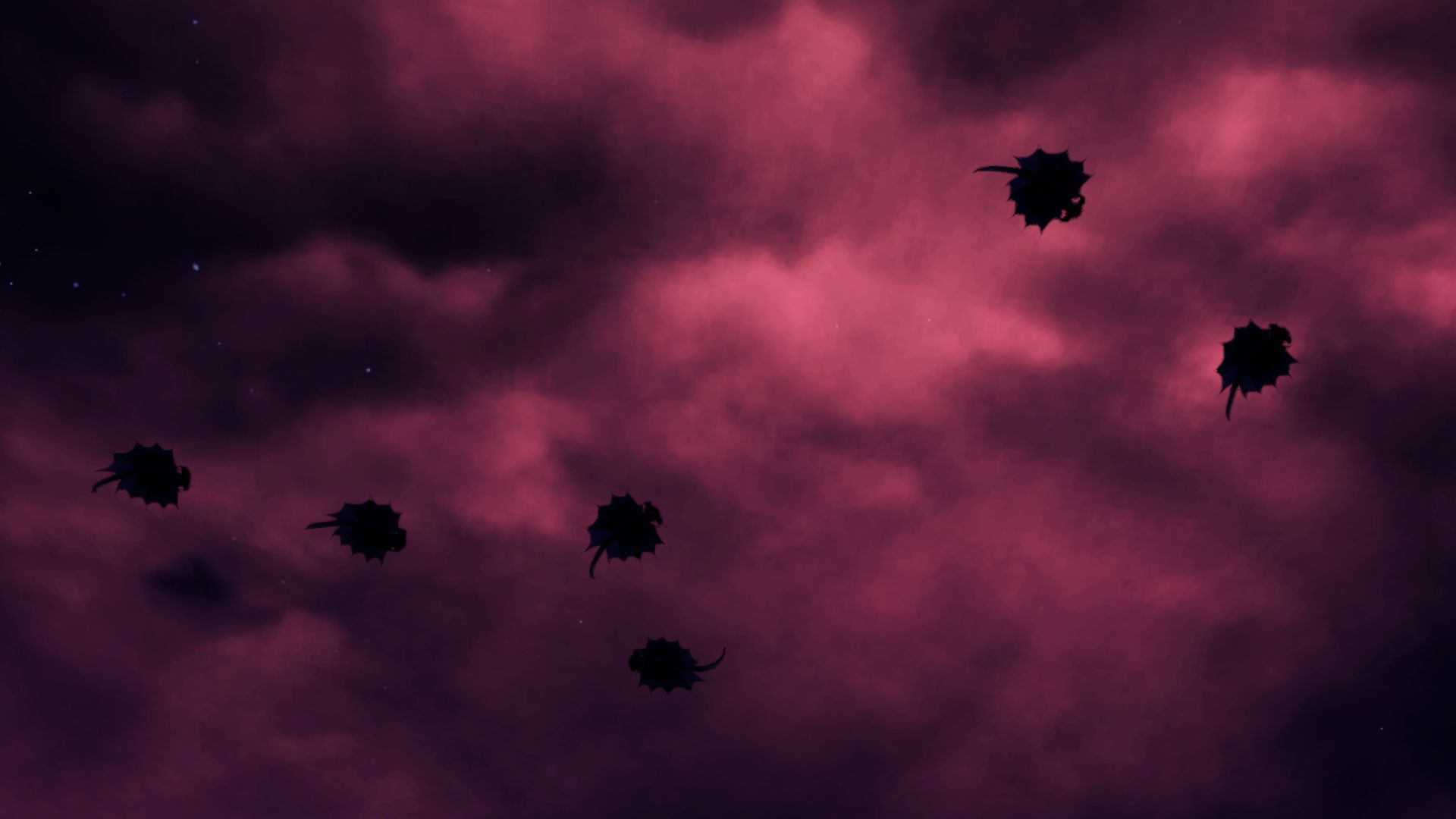 New (?) creatures in the sky - nope, they just used to fly higher up and thus be less noticable.
New (?) creatures in the sky - nope, they just used to fly higher up and thus be less noticable.
